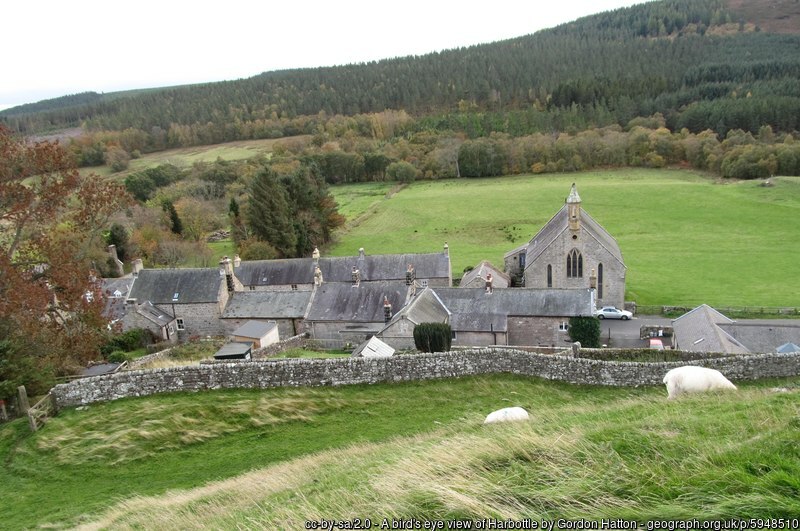The Late Twenties – M Philipson
Submitted by: Sally Brewis - 22nd January 2022
Between the years 1924 – 29 my family (father, mother and five children) spent the month of August on holiday in Harbottle. We stayed at the Cherry Tree House which was occupied then by the grandparents of John Common, the postman. Old Mr. Common looked after the farm and his wife was a splendid cook.

We came out from Newcastle by train to Rothbury. Those of us who could ride bicycles brought them on the train and cycled to Harbottle. The luggage and non-cyclists were brought out by George or Eddie Common. They ran a taxi service using Ford cars which were high enough off the ground to clear the fords up the valley, for there was no bridge beyond Alwinton.
In 1927 a bridge was being built at Linbriggs when a flood carried away the scaffolding, and great baulks of timber came pounding down the Coquet past Harbottle.
We all enjoyed our holidays here: exploring the neighbourhood, climbing the Drake Stone, paddling and swimming in the lake, and having picnics by the river. There was forestry on the hills to the south, only open moorland and heather.
We older ones would go with our father on longer expeditions into the hills, cycling on the rough road up the Coquet, leaving our bicycles at a farm, and then walking. We went as far as Makendon and the Roman camps at Chew Green; climbed Windy Gyle by Clennell Street guide post or by the peat road from Barrowburn; explored the Ridlees valley and bathed in the peaty water of Linsheels Lake – (neither of them was within “The Range” at this time).
The hills up the valley were covered with grass (no forestry), and with large flocks of sheep. The high hill farms were all occupied, the houses very well kept, and the wives often willing to provide us with a marvellous home-made tea. They had their groceries brought up by car or sled, and were self-supporting in things like milk, butter, vegetables and garden fruit.
Coal was difficult to transport, so peat was cut from special places on the hill and stacked in brick-like shapes beside the house after it had been left to dry out. Peat made a beautiful glowing fire – (Eliza Murray’s scones made on a girdle hung over her fire were “out of this world”).
The postmen (several of them from Harbottle) had to deliver by bicycle, or on foot. Sheep were driven over the hills to market in the Borders. This could take days, but the shepherd would know where he could stop, with a meal and a bed for himself, and an enclosed field called a “park” for his flock to feed and rest.
Once, at the farm called Wholehope on Clennell Street, my father asked the shepherd’s wife if it was not lonely living up there. “Oh no”, she said, “we are on The Street. There’s plenty of people passing”. This same lady told us that she would sometimes walk to Harbottle for a Whist Drive – 3 or 4 miles down and the same back up – at night!
The general appearance of the village was not so different – all the old stone houses were there, though none derelict and unlived in. One house behind the fountain has had to be demolished and replaced by three Council bungalows. The road from Rothbury came in round the other side of the Stables, and where the road runs now there were three cottages.
The Post Office was in the house called Silver Birches. The mails were carried by Lee of Rothbury who had a contract with the GPO, but ran a little transport business of his own. He would bring up the mail in the mornings in a vehicle very similar to our present post bus, and stand it in front of the Hall. Then he would take down movable shutters that covered the windows saying, “Royal Mail GVR”, and load up any passengers for Rothbury. There he would wait for the afternoon train, and bring out any passengers for Harbottle, put up his shutters again, and return to Rothbury with the letters.
First published in Clippings in 1989 (reprinted 1990), published by Upper Coquetdale Publications ISBN 0 9515 380 0 4



